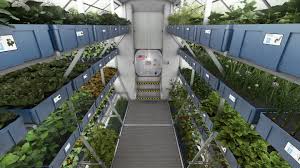
Breaking News
 Paper Silver IMPLODES: Experts Predict HUNDREDS PER OUNCE is Coming
Paper Silver IMPLODES: Experts Predict HUNDREDS PER OUNCE is Coming
 Trump Does it Again (and Again)
Trump Does it Again (and Again)
 International Judicial Authority Declares mRNA Injections Are Biological And Technological...
International Judicial Authority Declares mRNA Injections Are Biological And Technological...
 What Nobody Tells You About Homesteading
What Nobody Tells You About Homesteading
Top Tech News
 3D Printed Aluminum Alloy Sets Strength Record on Path to Lighter Aircraft Systems
3D Printed Aluminum Alloy Sets Strength Record on Path to Lighter Aircraft Systems
 Big Brother just got an upgrade.
Big Brother just got an upgrade.
SEMI-NEWS/SEMI-SATIRE: October 12, 2025 Edition
 Stem Cell Breakthrough for People with Parkinson's
Stem Cell Breakthrough for People with Parkinson's
 Linux Will Work For You. Time to Dump Windows 10. And Don't Bother with Windows 11
Linux Will Work For You. Time to Dump Windows 10. And Don't Bother with Windows 11
 XAI Using $18 Billion to Get 300,000 More Nvidia B200 Chips
XAI Using $18 Billion to Get 300,000 More Nvidia B200 Chips
 Immortal Monkeys? Not Quite, But Scientists Just Reversed Aging With 'Super' Stem Cells
Immortal Monkeys? Not Quite, But Scientists Just Reversed Aging With 'Super' Stem Cells
 ICE To Buy Tool That Tracks Locations Of Hundreds Of Millions Of Phones Every Day
ICE To Buy Tool That Tracks Locations Of Hundreds Of Millions Of Phones Every Day
 Yixiang 16kWh Battery For $1,920!? New Design!
Yixiang 16kWh Battery For $1,920!? New Design!
 Find a COMPATIBLE Linux Computer for $200+: Roadmap to Linux. Part 1
Find a COMPATIBLE Linux Computer for $200+: Roadmap to Linux. Part 1
Green thumb in space: NASA has decided that gardening in space is crucial for the ...

(Natural News) Aside from having to adjust to an environment that's vastly different from Earth's, future explorers will have to learn how to grow their own food so they can have access to vegetables while they're exploring space.
However, this isn't as easy as cultivating a garden in your backyard. In space, astronauts will have to deal with the lack of gravity, sunlight, and wind, a factor that's not a problem for landbound individuals.
To address this concern, the National Aeronautics and Space Administration (NASA) has lent a hand to help the next generation of explorers learn how to tend a garden in space. This skill is crucial since young explorers will have to know how to grow their own food, especially if they're going on expeditions that may last for several months or years. NASA has enlisted the help of professional botanists and novice gardeners to develop space-ready gardening techniques.
Astronauts also need access to fresh produce as nutrients, such as vitamins C and K, will break down in freeze-dried foods. If they don't consume nutrient-rich foods, astronauts can suffer from health problems like cancer, heart disease, infections, and poor blood clotting.
Dr. Carl Lewis, the director of the Fairchild Tropical Botanic Garden who's also spearheading the space gardening project, said that because there's a vast number of plants, it can be hard to determine which ones are suitable for food production in space.
So far, Dr. Lewis' botanic garden has identified 106 plant varieties that can grow well in space. The list includes cabbages and lettuces.
Fairchild Tropical Botanic Garden is working with 15,000 student botanists from 150 different schools. The students will try to cultivate plants in conditions that mimic space. They'll plant vegetables in their classrooms using trays rigged with lights that simulate "grow boxes" used in space. The students involved in the project will take care of the plants and record data on their progress, which will then be shared with NASA. (Related: Greenhouse of the Future is the perfect structure for hosting Food Rising Mini-Farm Grow Boxes.)
Rhys Campo, a 17-year-old high school student who's growing red romaine lettuce, shared that they're using set-ups that are more advanced than the usual gardening equipment.
The students sometimes encounter variables, such as overwatering and different classroom temperatures. However, NASA plant scientist Gioia Massa remains hopeful. She noted, "If you have a plant that does well in all that variability, chances are that plant will do well in space."
The four-year project, which has funding worth $1.24 million from NASA, is almost 50 percent done.
Veggie grow boxes
Astronauts in the International Space Station (ISS) are also facing some gardening obstacles while in orbit.
Veggie, the first portable grow box for space that features LED lights, was tested at the ISS in 2014. While some of the lettuce did not germinate, others died of drought. Despite these failures, the astronauts kept trying. One year later, they were finally able to grow lettuce.
Aside from two Veggie grow boxes at the ISS, there is also a third called the Advanced Plant Habitat.



